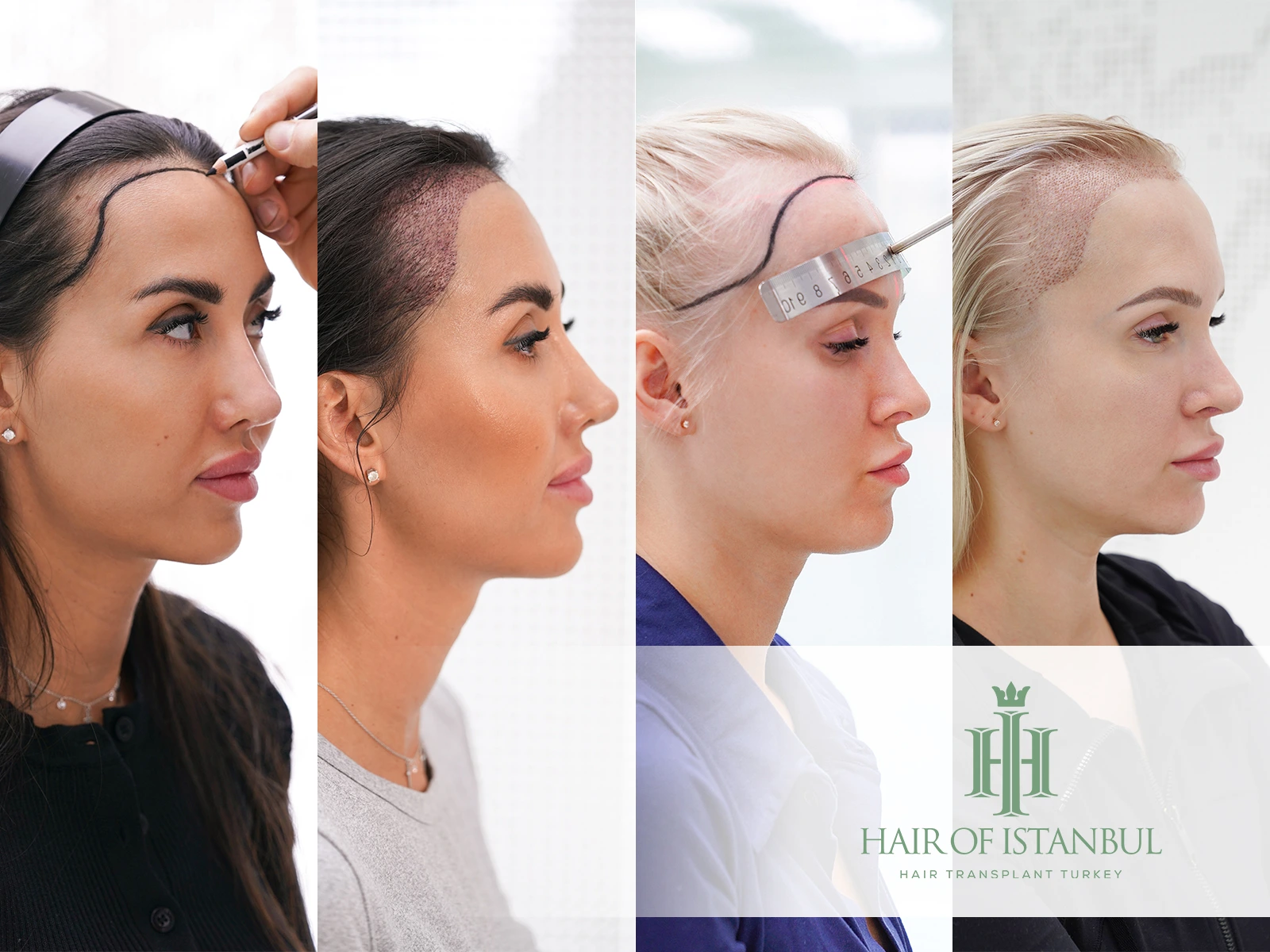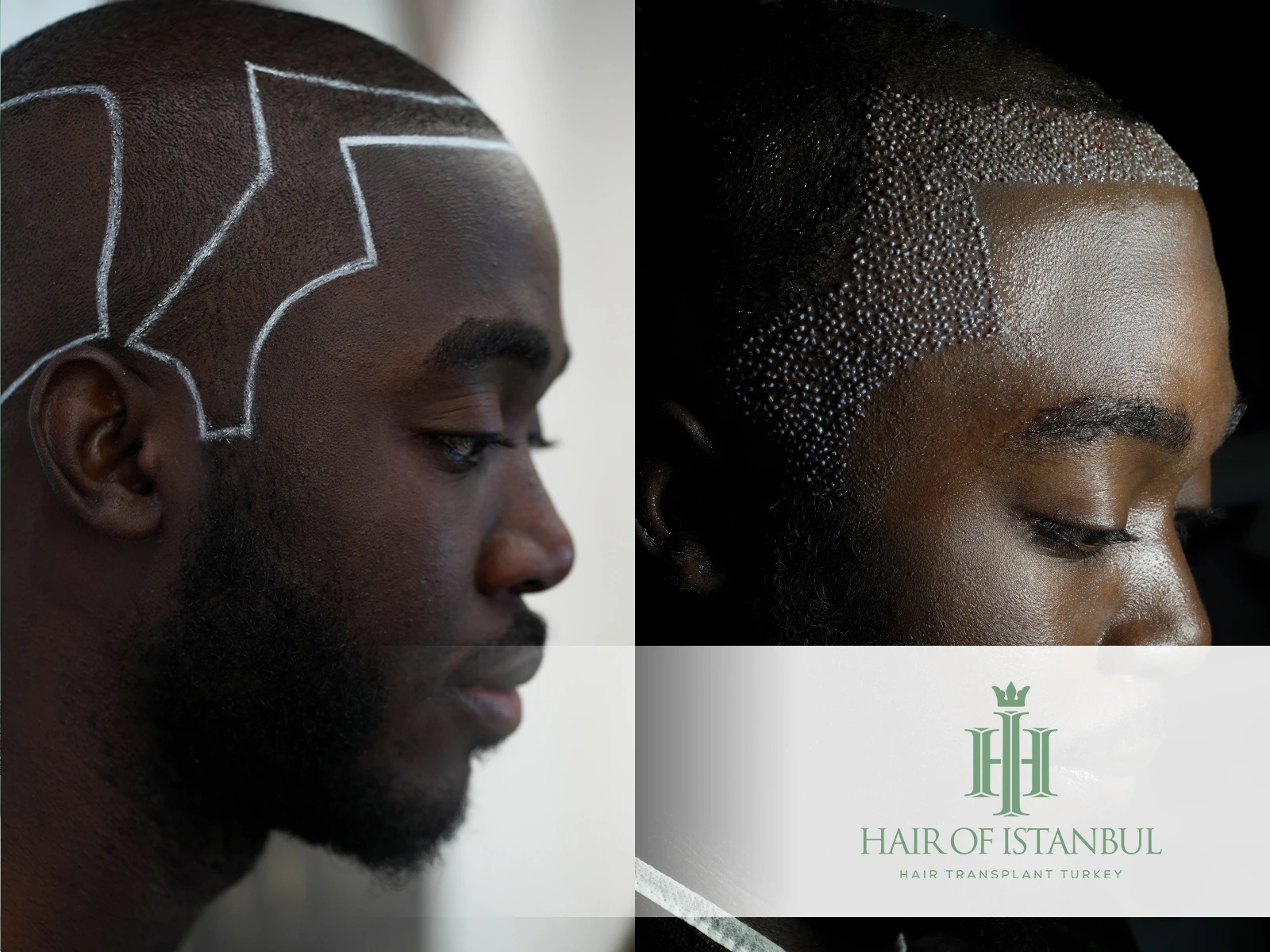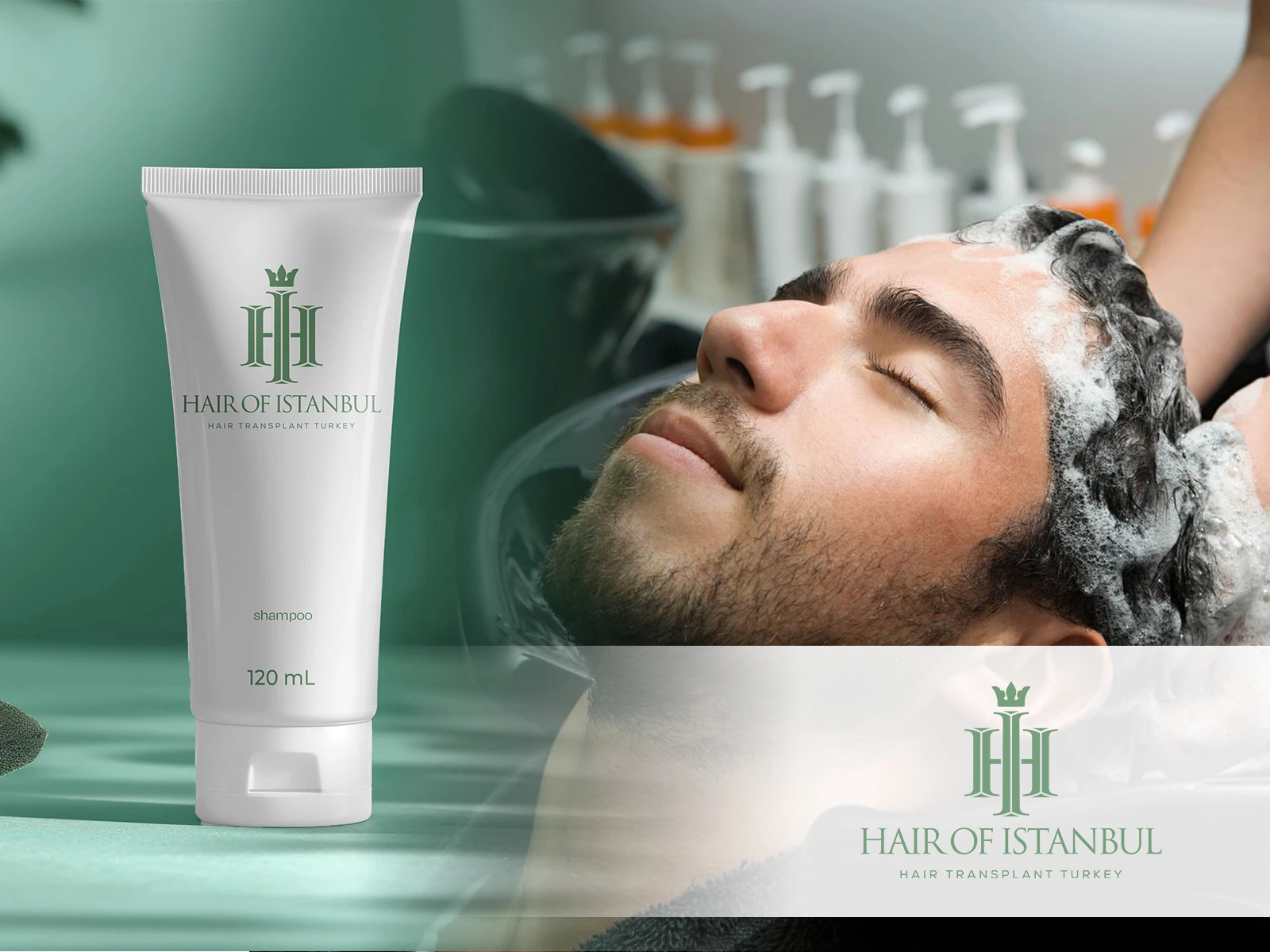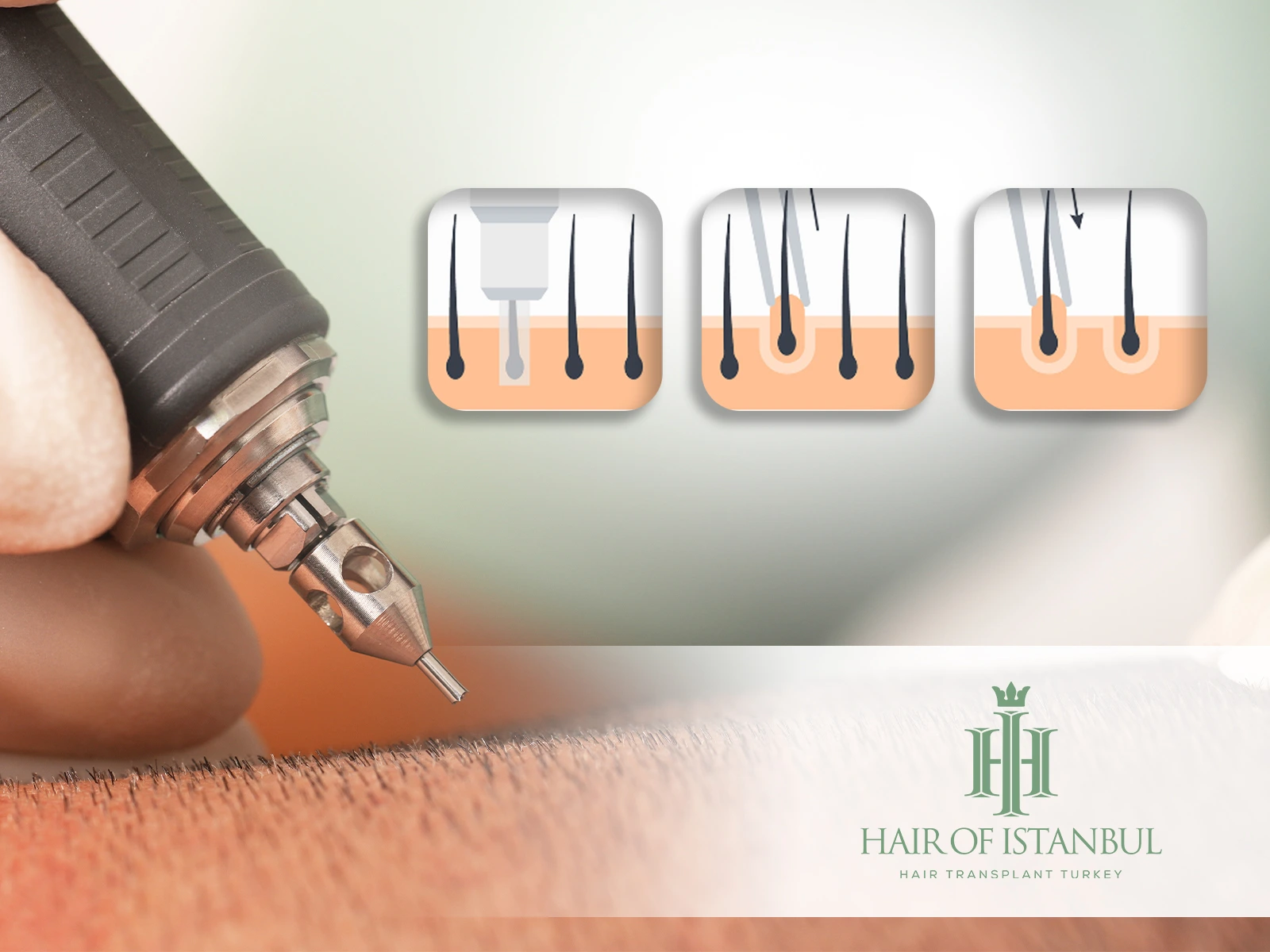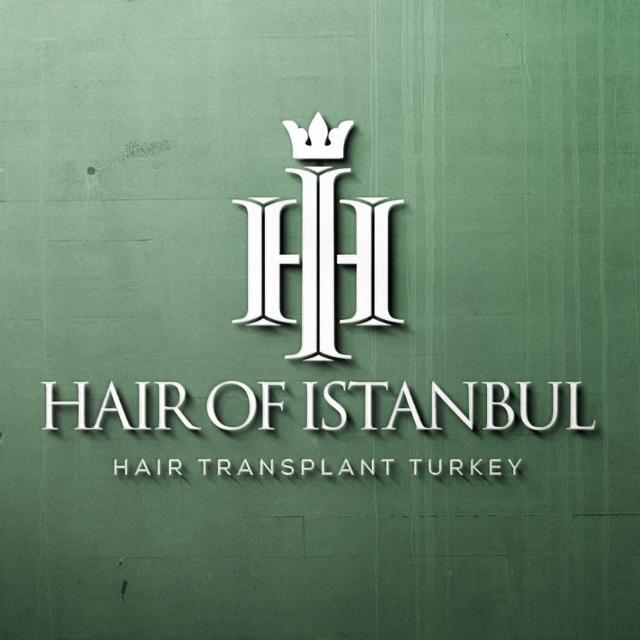Hair Loss
Most healthy adults have around 80,000-120,000 hairs on their scalps. According to the American Academy of Dermatology Association, it is perfectly normal for people to shed from 50 to 100 hairs from the scalp every day. This usually isn’t noticeable because new hair is growing in at the same time. Hair loss occurs when new hair fails to replace the hair that has fallen out and it can range from mild hair thinning to total baldness.
Hair can fall out for many different reasons. Medically, causes of hair loss can be divided into the following categories:
Hereditary
Androgenic alopecia (also known as pattern alopecia) refers to hereditary hair loss, which is the most common cause of hair loss, affecting up to 50% of population worldwide. This type of hair loss typically occurs in a predictable pattern, often referred to as male pattern baldness or female pattern baldness.
The typical pattern of male baldness begins at the hairline. Progressive hair loss above the temples causes the hairline to recede, creating an “M” shape. A circular area on the back of the head gradually thins and expands in size over time. As the hair loss progresses, the crown and temples may meet, creating a U-shaped (or horseshoe) pattern.
Although male pattern baldness is often regarded as a relatively minor dermatological condition, hair loss impacts self-image and is a great cause of anxiety and depression in some men.
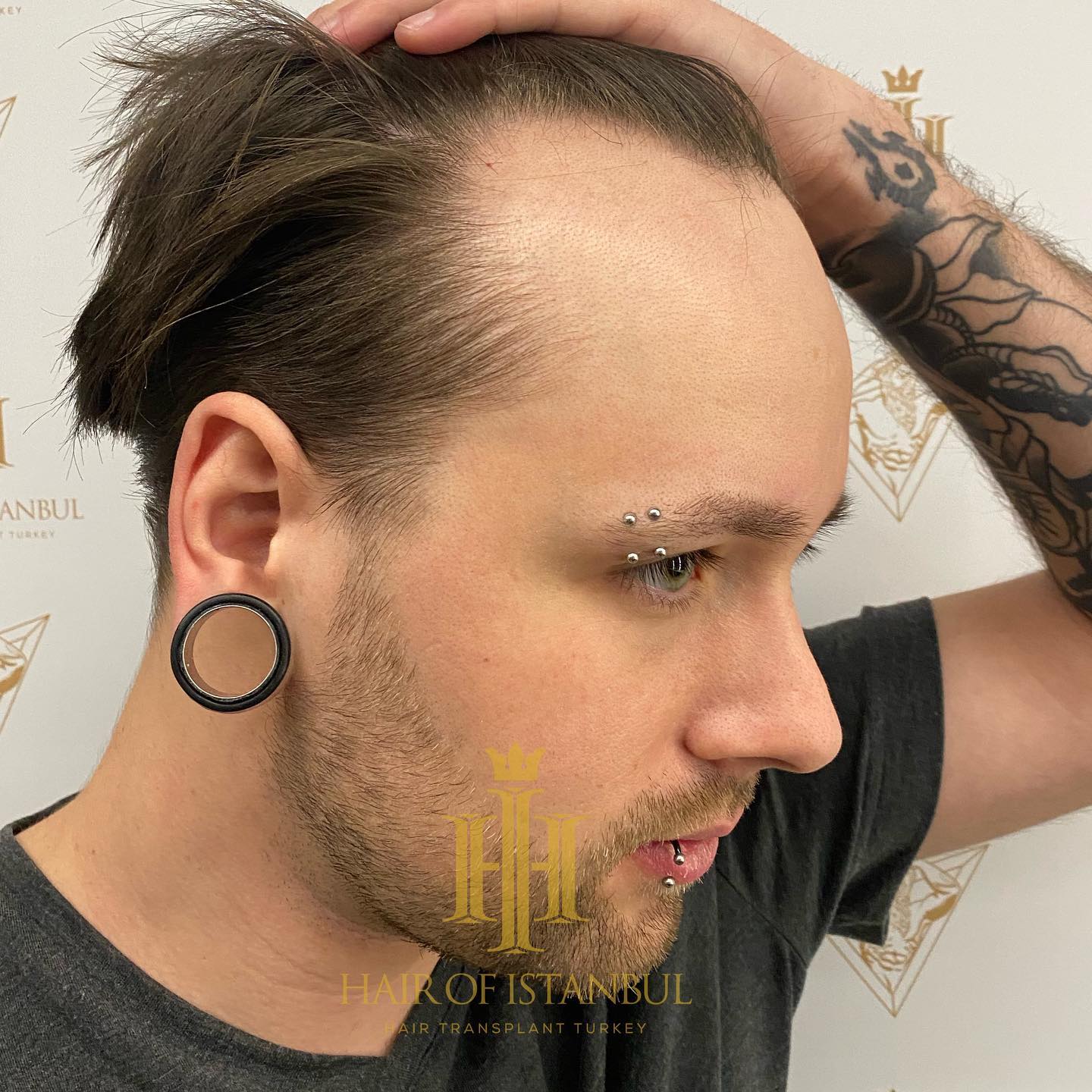
The chances of developing male pattern baldness increase with age. About 25% of people assigned male at birth see the first signs of hair loss before age 21. By age 50, half of white men have a visible sign of male pattern hair loss like noticeable thinning, receding hairline, or balding; and about 70% will lose hair as they get older.
Male pattern hair loss seems to be due to a combination of an inherited tendency toward baldness, male hormones and increasing age.
Research has found that more than 80% of men experiencing noticeable balding had a father who also lost their hair, showing high genetic correlation. While the exact mechanism of genetic involvement in male pattern baldness is still not completely understood, it is thought to be polygenic, meaning it involves more than one gene. Some scientists believe that even normal levels of androgens are sufficient to cause hair loss in genetically susceptible individuals.
Androgens are hormones that produce male secondary sex characteristics, such as deep voice, body hair and the ability to generate muscle mass at a faster rate compared to females. Although testosterone is the primary male sex hormone, DHT (dihydrotestosterone) also plays a major role in numerous vital functions within the body. Prior to birth, it helps to promote proper development of genitals, and during puberty, it’s responsible for facial and body hair.
In genetically susceptible individuals, DHT can attach to androgen receptors found inside of hair follicles, causing them to undergo a process referred to as “miniaturization,” in which the follicles gradually shrink, wither and eventually stop growing new hairs.
Female pattern hair loss is the most common form of alopecia in women. The typical pattern of female baldness begins as the widening or thinning around the parting, also known as Christmas tree pattern, followed by diffuse hair loss radiating from the top of the head. The most important difference from male pattern baldness is the intact front hairline.
12% of women first develop clinically detectable female pattern hair loss by the age of 29, 25% by age 49, 41% by 69, and >50% have some element of female pattern hair loss by 79.
Although the role of androgens in the pathogenesis of male pattern hair loss has been clearly established, the same cannot be said about female pattern hair loss. In cases with no elevation of androgen levels, a genetic predisposition is thought to be involved.
Hair loss can severely affect a woman’s emotional well-being and quality of life, therefore it needs to be evaluated by a physician at the earliest possible stage to rule out other potential causes and prevent or at least slow down the progression. Symptoms related to hyperandrogenism such as hirsutism, menstrual irregularities, difficulty conceiving, or severe cystic acne should be investigated thoroughly.
Nutrient Deficiencies
The essential vitamins and nutrients come from a healthy, varied, and well-balanced diet and ensure good health all throughout the body. Poor nutrition or severely restrictive crash diets can lead to all kinds of nutrient deficiencies, which in turn can result in hair loss, from thinning hair to patches of baldness.
Keratin is a fibrous protein that forms the entire structure of hair, therefore protein deficiency is the most important nutrient deficiency associated with hair loss. Protein deficiency can be caused by inadequate dietary protein intake, kidney diseases, liver diseases or gastrointestinal diseases.
Vitamins and minerals are also important for normal cell growth and function and may contribute to hair loss and diminished hair growth when they are deficient. Information about the most important vitamins and minerals involved in hair loss is listed below.
Iron deficiency is especially common in women with hair loss. The main cause of iron deficiency in otherwise healthy premenopausal women is heavy menstruation.
Zinc deficiency has been proved to be associated with alopecia by multiple studies. Causes of zinc deficiency are malnutrition, inflammatory bowel disease, jejunal bypass surgery, and cystic fibrosis. Alcoholism, malignancy, burns, infection, and pregnancy may all cause increased metabolism and excretion of zinc.
Vitamin B2 (riboflavin) is a component of important coenzymes and it’s deficiency, although rare, can be the cause of hair loss.
Biotin deficiency can be caused by malabsorption, alcoholism, pregnancy, prolonged use of antibiotics that interrupt normal flora, medications such as valproic acid, and isotretinoin. Signs of biotin deficiency include hair loss, skin rashes, and brittle nails.
Vitamin B12 and folate are necessary for DNA synthesis, neurological function, and red blood cell formation. Presence of folate and vitamin B12 in nucleic acid production suggests that they might play a role in the highly proliferative hair follicle. B12 and folate deficiency can be caused by poor diet, alcoholism, gastric surgery, or a malabsorptive disorder.
Vitamin C plays an essential role in the intestinal absorption of iron due to its chelating and reducing effect, assisting iron mobilization and intestinal absorption. Therefore, vitamin C intake is important in patients with hair loss associated with iron deficiency.
The vital role of vitamin D in the hair follicle has been proven repeatedly. Not only does vitamin D deficiency cause hair loss directly, but it has also been found linked to autoimmune disease related hair loss. Vitamin D deficiency can be caused by insufficient sunlight exposure, malnutrition, kidney or liver failure, certain medications or cancer.
Selenium has been associated with hair loss, therefore maintaining adequate levels can be beneficial. However, the excessive intake of selenium has paradoxically been associated with hair loss as well. It’s been shown that consuming too much or over-supplementing certain nutrients, such as vitamins A and E, may also induce hair loss, making it especially important to refer to a physician before deciding on taking them as a supplement.
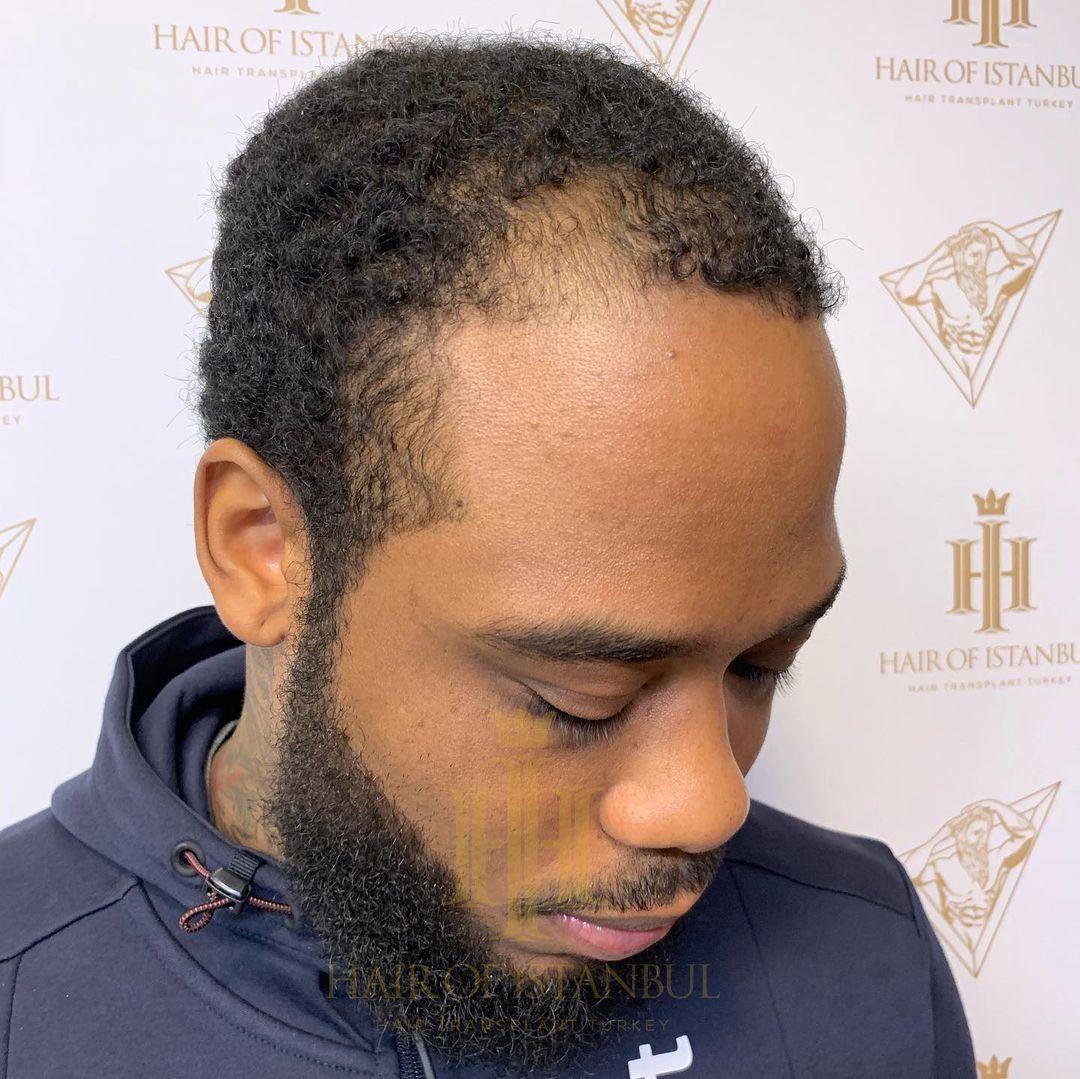
Autoimmune diseases
Autoimmune diseases cause the immune system to mistakenly attack the body, causing numerous complications, including hair loss. Some of the autoimmune diseases implicated in hair loss are Alopecia Areata, Systemic Lupus Erythematosus (Lupus), Psoriasis, Hashimoto’s Thyroiditis, Grave’s Disease, Crohn’s Disease and Inflammatory Bowel Disease (IBD). It is important to note that autoimmune diseases have a high tendency to coexist.
Alopecia Areata affects an estimated 147 million people worldwide, making it the most common autoimmune condition that results in recurrent nonscarring hair loss. It is characterized by patches of hair loss that can progress to complete loss of hair from the scalp (alopecia totalis) or from the whole body in severe cases (alopecia universalis).
In Alopecia Areata, the immune system mistakenly attacks hair follicles, causing inflammation. The causes of this immune attack are not completely understood, but it is believed that both genetic and environmental factors play a role.
There’s no gender predominance and all racial and ethnic groups are affected equally. The onset can be at any age, but most people get it in their teens, twenties, or thirties. When it occurs in children younger than age 10, it tends to be more extensive and progressive.
Systemic Lupus Erythematosus is an autoimmune disease characterized by widespread inflammation that affects many different systems and organs in the body, creating a wide range of symptoms such as fatigue, joint pain, joint stiffness, butterfly-shaped malar rash, anemia, abnormal blood clotting and hair loss.
There are two types of hair loss involved in lupus: scarring and non-scarring. Non-scarring type is caused by inflammation around hair follicles which leads to the loss of eyebrows, eyelashes and beard as well as scalp hair. Hair loss due to inflammation may be reversible if the disease is successfully treated and kept in remission. Scarring type hair loss is caused by discoid rash on the scalp and can be irreversible.
Psoriasis is an autoimmune condition that affects 2%–3% of the population. Characteristic psoriatic lesions are well-circumscribed erythematous plaques with silvery-white scales, typically distributed over extensor surfaces of elbows and knees, as well as the scalp. According to the American Academy of Dermatology at least 50% of people with plaque psoriasis develop scalp psoriasis, which in turn can cause temporary hair loss.
Hair loss caused by Hashimoto’s Thyroiditis and Grave’s disease will be discussed in ‘Hormonal Imbalances’ chapter.
Hormonal Imbalances
Research shows that hormone balance is an important prerequisite for the healthy growth of hair. Female bodies naturally produce sex hormones estrogen and progesterone, as well as androgens, which are present in higher levels in males. Polycystic Ovarian Syndrome (PCOS) is a condition seen in women, characterized by production of an abnormally high level of androgens, including testosterone, which leads to irregular menstrual cycles, weight gain, excessive body hair (hirsutism), ovarian cysts, infertility, cystic acne and hair loss.
The World Health Organization (WHO) data suggests that approximately 116 million women (3.4%) are affected by PCOS globally. Thinning hair due to the effects of male hormones (androgens) is called androgenic alopecia, which has been discussed in detail in the first chapter.
The incidence of androgenic alopecia in PCOS is not clearly defined, but several reports show a prevalence of 40-70%, with several young women experiencing hair loss and thinning in their teens. Endocrinologists may also note androgenic alopecia in other rare androgen related disorders such as congenital adrenal hyperplasia and masculinizing neoplasm of the ovary or adrenal gland.
The wildly fluctuating hormonal changes that happen following pregnancy and childbirth can also lead to hair loss in women. Estrogen levels skyrocket during pregnancy, temporarily altering hair growth cycles. During this time, women are likely to experience less hair loss than normal. As the levels of estrogen return to normal after pregnancy, hair loss, thinning or even patches of baldness can be seen. Postpartum hair loss, also known as telogen gravidarum, is a common condition affecting 40 to 50% of women who have recently given birth and can last up to 18 months.
Hair loss may be exacerbated during other estrogen-related changes as well, such as birth control use or menopause. Any hormonal form of birth control containing progestin such as oral pills, skin patches, hormone injections, and implants can potentially cause hair loss. Stopping some types of birth control pills can cause a temporary hormonal imbalance resulting in temporary hair loss as well. Hair loss in menopause is related to physiological reduction of estrogen and progesterone production, further exacerbated by an increase in the production of androgens. These changes lead to hair loss and hair thinning as well as dry skin, hot flashes, irregular periods, sleep problems, mood swings and weight changes.
Autoimmune diseases of the thyroid gland, such as Hashimoto’s thyroiditis and Graves’ disease may also contribute to hair loss. Thyroid hormone is mainly responsible for controlling the speed of metabolism, regulating nearly every function in the body, including hair growth.
Both Grave’s disease and Hashimoto’s thyroiditis are autoimmune disorders that affect women at a much higher rate, particularly in middle age. Hashimoto’s thyroiditis is the leading cause of an underactive thyroid (hypothyroidism) characterized by heightened sensitivity to cold, sudden weight gain, fatigue, constipation, memory lapses, brittle nails and hair loss. Grave’s disease on the contrary causes overproduction of thyroid hormone (hyperthyroidism) characterized by irregular/fast heartbeat, weight loss, fatigue, diarrhea, irritability, trembling hands as well as hair loss.
Graves’ disease can also affect skin and hair follicles directly, causing Graves’ dermopathy and possibly worsening the symptoms of hair loss. Thyroid-related hair loss (whether hypothyroidism or hyperthyroidism), can be reversed depending upon the severity of the condition, how soon it is diagnosed, and the efficacy of the treatment.
Inflammatory Scalp Conditions
Some medical conditions such as seborrheic dermatitis, lichen planopilaris and cicatricial alopecia may damage hair follicles and cause hair loss through the process of inflammation.
Seborrheic dermatitis, also called seborrheic eczema, is a common chronic skin condition that predominantly affects the scalp, damages the hair follicles and hinders hair growth. Flare-ups may occur seasonally or when a person experiences periods of stress and are characterized by increased redness, flaky rashes, and intense itchiness.
The reason of intense itchiness is irritation and inflammation caused by increased serum production and overgrowth of Malassezia on the scalp. Malassezia is a type of naturally-occurring yeast that can cause inflammation and damage hair follicles if produced in excess and left untreated. Scratching the scalp further damages hair follicles, obstructing natural hair growth and causing hair to fall out. Luckily, it most often grows back once the source of inflammation is treated.
Lichen planopilaris is a relatively uncommon inflammatory condition that can lead to permanent hair loss. It usually affects young adult women, although the age range is wide and it can also affect men. The disease is considered to be a form of lichen planus which affects the hair follicles. It results in patchy, progressive, permanent hair loss mainly on the scalp, although other hair bearing skin may be affected.
Scarring, or cicatricial alopecia, is an inflammatory condition that destroys hair follicles, causing scarring and permanent hair loss. There are two types of scarring alopecia: primary and secondary. Primary scarring alopecia is caused by an inflammatory or autoimmune disorder that directly targets and destroys hair follicles. Secondary scarring alopecia is a side effect of injury or damage caused by burns, infections, radiation or tumors. Cicatricial alopecia affects both men and women but is rare in children. Researchers do not yet fully understand the pathophysiology of this disease. The best way to prevent fibrosis and permanent hair loss is to intervene early.
Infections
Tinea capitis, also known as scalp ringworm, is a common fungal infection of the scalp, involving both skin and hair. It is most often seen in preadolescent children, with incidence peaking between the ages of three and seven years, but can also affect adults with history of immunosuppression, diabetes, anaemia, long use of topical or systemic corticosteroids, contact with animals and a source of infection elsewhere in the body.
Clinically, children present with pruritus, scaling, “black dots,” hair loss, and posterior cervical lymphadenopathy, whilst tinea capitis in adults is often subtler and may mimic the appearance of seborrheic dermatitis with mild inflammation and scarce scaling. Non-inflammatory tinea capitis carries an excellent prognosis with appropriate and early treatment, while severe inflammatory tinea capitis may result in areas of permanent scarring alopecia.
Syphilis is a common sexually transmitted infection more commonly observed in men, who are infected at a ratio of 7:1 compared to women. Secondary syphilis is commonly characterized by systemic symptoms including fever, headache, myalgia, rash involving palms and soles, and hair loss, also known as alopecia syphilitica.
Moth-eaten appearance is the most common manifestation of alopecia syphilitica, presenting with small, irregularly bordered alopecic areas throughout the scalp. It is worth noting that the moth-eaten appearance of alopecia is not exclusive to alopecia syphilitica and can be found in alopecia areata, tinea capitis, and trichotillomania as well. Hair regrowth on the scalp can be expected in 5 to 12 weeks after the administration of treatment.
Medication
A large number of drugs may interfere with the hair cycle and produce hair loss. Drugs may affect follicles through 2 different ways: by preventing cells from dividing during the cycle of active hair growth (anagen effluvium) or by forcing the follicles into premature rest, making the hair fall out too early (telogen effluvium).
In anagen effluvium, hair loss usually occurs within days to weeks of drug administration, whereas in telogen effluvium, hair loss becomes evident 2 to 4 months after starting treatment. Anagen effluvium is a prominent adverse effect of chemotherapy medication and is often severe, causing people to lose most or all of the scalp hair, as well as eyebrows, eyelashes, and other body hair. Telogen effluvium is relatively more common and may be a consequence of a large number of drugs including anticoagulants, retinol (vitamin A) and its derivatives, antibiotics, antidepressants, birth control pills, immunosuppressants, anticonvulsants, steroids, interferons and antihyperlipidemic drugs.
Drug-induced hair loss is usually reversible after interruption of treatment. The prevalence and severity of alopecia depend on the drug as well as on individual predisposition.
Stress
Telogen effluvium is one of the most common causes of alopecia characterized by excessive shedding of hair caused by physiological or emotional stress. Telogen effluvium can be acute or chronic.
If there is some “shock to the system”, as many as 70% of the scalp hairs are then shed in large numbers about 2 months after the shock. This sudden increase in hair loss, usually described as the hair coming out in handfuls, is acute telogen effluvium. This is a different problem than gradual genetic hair thinning. However, this can be seen in the less common chronic telogen effluvium, only after a significant amount of hair has already been lost.
Among the common causes are high fevers, childbirth, severe infections, severe chronic illness, severe psychological stress, major surgery or illnesses, over or under active thyroid gland, crash diets with inadequate protein intake, and a variety of medications. Most hair loss from medications is this type and causes include retinoids, beta blockers, calcium channel blockers, antidepressants, and NSAIDS (including ibuprofen).
Typically, abrupt diffuse hair loss is noticed several weeks to several months after the incident has started the biological program of hair loss. While the most often noticed hair loss occurs on the scalp, some individuals may also notice hair loss elsewhere on the body.
Significant hair shedding usually occurs when shampooing, combing, or even gently manipulating the hair. Shedding usually slowly decreases over 6 to 8 months once the cause of the hair loss is no longer present. As some of the causes represent ongoing problems, it is important to determine the likely cause when possible and take appropriate measures to prevent continued hair loss. Nevertheless most cases of telogen effluvium require no treatment.
Chronic telogen effluvium is recently recognized and not uncommon. It often occurs in women who previously had very thick hair in their teens and twenties and still have a normal head of hair to a casual observer. It affects the entire scalp with no obvious cause known. It usually affects women of 30 to 60 years of age, starts suddenly and tends to fluctuate for a period of years. The degree of shedding is usually severe in the early stages and the hair may come out in handfuls. It does not cause complete baldness and appears to be self-limiting in the long run.
Trauma
Traction alopecia occurs in individuals with hairstyles that produce a continuous pulling force on the hair roots. It usually occurs in women of African descent who have tight and curly spiral hair. It can be associated with a headache, that is relieved when hair is loosened. The pattern of traumatic alopecia is characteristic and reflects the distribution of the traction. Problems typically start in childhood, and may initially be reversible if an intervention takes place.
Common hair care practices that involve tension are ponytails/pigtails, buns, chignon, braids, cornrows, twists, sister locks, dreadlocks, weaves, extensions, and curlers. Hair styles requiring the use of strong chemicals, such as bleaching, colouring, hair relaxing and permanent waves can also cause traumatic alopecia.
In addition, some people have an uncommon psychiatric disorder called trichotillomania characterized by compulsive hair pulling and twisting that can result in bald spots. Researchers believe this mental health condition is related to obsessive-compulsive disorder and other types of anxiety disorders. Aside from compulsive hair pulling, other signs of trichotillomania include feeling relief or pleasure after hairs are pulled, as well as noticeable patches of hair loss. Trichotillomania most often develops between ages 10 and 13, but is considered a chronic problem that may improve with treatment.
Poisoning
Thinning hair and hair loss are common signs of poisoning.
Lithium and selenium toxicity is known to cause hair loss but lead, cadmium, mercury, iron, aluminium, copper, and other heavy metals can also affect hair growth. Toxins interfere with hormones, strip the body of nutrients, and can even damage the actual hair follicle, resulting in excessive hair shedding and impaired hair growth.
Arsenic, thallium, lithium and warfarin, which is found in rat poison, can cause hair loss as well.
Age
Aging of hair affects color, production, and structural properties of the hair fiber consequently altering it’s manageability and overall appearance.
Senescent alopecia has been defined as non-androgen-dependent hair thinning found in those over 60 years of age with a negative family history of common baldness. Much like pattern hair loss, it involves a progressive decrease in the number of follicles and hair diameter.


